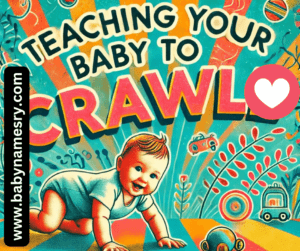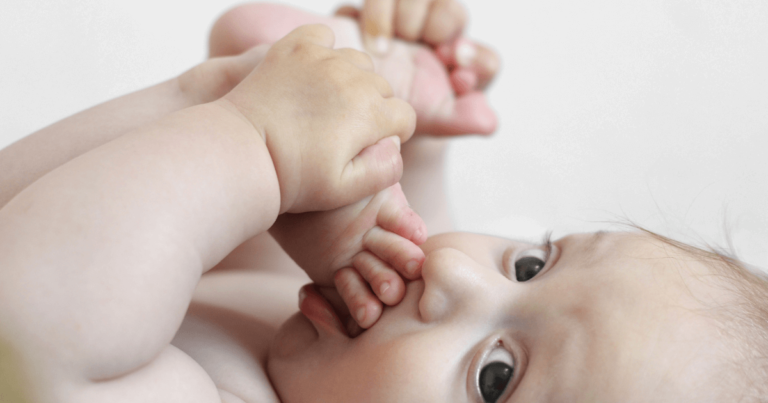Teaching Your Baby to Crawl: 2025 Edition

Baby crawling refer to a specific form of locomotion where the baby uses their hands and knees to move around. Some babies may even use their forearms and feet while crawling. Crawling can also involve scooting, rolling, or dragging themselves on their bellies.
Teaching your baby to crawl is an exciting milestone for both parents and the baby. It marks a huge developmental leap and signals that your little one is growing up. Crawling helps to strengthen their muscles, develop coordination, and improve their gross motor skills. It also allows them to explore their surroundings and become more independent.
So, if teaching your baby to crawl has been a headache for you, worry no more! In this guide, we will discuss tips and techniques to help your baby crawl like a pro.
Why is Crawling Important?
Crawling is an essential developmental stage for babies. It not only helps them learn to move around independently but also plays a crucial role in their physical and cognitive development. Here are some reasons why crawling is important:
- Strengthens muscles: Crawling involves the use of various muscle groups such as arms, legs, shoulders, and back. As babies crawl, they strengthen these muscles which are necessary for future physical activities like walking, running, and climbing.
- Develops coordination: While crawling, babies learn to coordinate their body movements while maintaining balance. This skill is crucial for other physical activities and also helps in developing hand-eye coordination.
- Improves gross motor skills: Crawling requires babies to use their entire body, which helps improve their gross motor skills, including hand-eye coordination, depth perception, and spatial awareness.
- Enhances cognitive development: While crawling, babies are constantly exposed to new sights, sounds, textures, and experiences. This helps stimulate their brain and promotes cognitive development.
You May Like: Why Do Babies Keep Losing Their Socks?
When Do Babies Start Crawling?
There is no set age at which all babies start crawling as every baby develops at their own pace. However, most babies begin to crawl between the ages of 6 to 10 months. Some may start earlier, while others may take a little longer. If your baby is not crawling by 12 months, it is recommended to consult a doctor for further evaluation.
Tips for Encouraging Your Baby to Crawl
Here are some tips and techniques that can help encourage your baby to crawl:
1. Tummy time
Tummy time is the practice of placing your baby on their tummy while they are awake and supervised. This helps develop the muscles necessary for crawling, as well as strengthening their head, neck, and shoulder muscles. Tummy time also allows babies to explore their surroundings from a different perspective, encouraging them to use their arms and legs to reach for toys or move around.
To make tummy time more enjoyable for your baby, try incorporating some fun activities such as playing with soft toys or using a mirror to engage with them. You can also place colorful objects within reach to encourage them to move towards it. Start with short periods of tummy time and gradually increase the duration as your baby becomes more comfortable.
2. Use enticing toys
Placing toys just out of reach can motivate your baby to start crawling towards them. Choose colorful and interesting toys that will grab their attention, such as soft balls, textured blocks, or musical toys. You can also try placing a favorite toy on one side and a new toy on the other to encourage your baby to explore and move towards it.
You will notice that no all toys will be equally attractive to your baby, so try different toys to see which ones they respond to the most. So, it wise to stay in budget and try out different toys until you find what works best for your little one.
How to use toys to encourage crawling:

- Place the toy in front of your baby, slightly out of reach, and encourage them to reach for it.
- Move the toy from one side to another to encourage your baby to follow it with their eyes.
- Use a toy that makes noise or lights up when touched to keep your baby engaged and motivated.
- Allow your baby to hold and explore the toy while on their tummy, helping them develop their fine motor skills.
- Use a soft cushion or pillow under your baby’s chest for support, allowing them to focus on reaching for the toy without straining their muscles.
3. Create a safe and open space
To encourage crawling, it’s important to provide your baby with a safe and open space to explore. This can include a designated play area or even just a cleared out section of the room. Make sure the space is free of any potential hazards such as sharp corners, loose wires, or small objects that your baby could choke on.
You can also use pillows, cushions, or soft mats to create a cushioned and comfortable area for your baby to crawl on. This will not only protect them from any hard surfaces but also give them confidence in their movements.
Read More: How to Bathe a Baby When Traveling
4. Praise and celebrate their efforts
It’s important to praise and celebrate your baby’s efforts while they are learning to crawl. This will not only boost their self-esteem but also encourage them to keep trying and exploring. Clap your hands, smile, and use words of encouragement such as “good job” or “you’re doing great”. Your positive reaction will motivate your baby to continue working on their crawling skills.
Remember small beginnings lead to big accomplishments. Celebrate every attempt and progress your baby makes towards crawling, regardless of how small it may seem. This positive reinforcement will help your baby feel proud of their achievements and continue to strive for more.
5. Avoid too much assistance
While it’s important to provide support and encouragement, it’s also crucial not to aid your baby too much in their crawling journey. Avoid holding their hands or physically moving them along the ground as this can hinder their natural development and discourage independent exploration.
Allow your baby to figure out their own movements and find their balance. This will help them develop coordination, strength, and confidence in their abilities. Be patient and let your baby set the pace for progress.
6. Limit Time in Baby Gear
Spending too much time in baby gear such as bouncers, swings, and walkers can also delay crawling development. These devices restrict movement and do not allow your baby to practice their crawling skills.
It’s important to provide plenty of opportunities for your baby to move freely on the floor. This will help them develop their balance, coordination, and strength needed for crawling. Experts recommend limiting time in baby gear to 20-30 minutes a day and promoting floor playtime instead.
Don’t Miss: How to Keep Your Baby from Chewing on the Crib
Recognizing Signs Your Baby Is Ready to Crawl
As a parent, it’s important to be aware of the signs that your baby is ready to start crawling. Every baby develops at their own pace, so don’t worry if your little one takes longer than others.
Some common signs that your baby is ready to crawl include:
- Increased mobility: Your baby may start rolling over more frequently and pushing up onto their hands and knees.
- Curiosity: Your baby may show a strong interest in exploring their environment by reaching for objects and trying to move towards them.
- Strong upper body strength: Crawling requires significant upper body strength, so if your baby can hold themselves upright while sitting or stand with support, they may be ready to start crawling soon.
- Coordination: Your baby may start to coordinate their movements, such as moving their arms and legs in a crawling motion.
- Tummy time skills: If your baby has been practicing tummy time regularly and can lift their head and chest off the floor, they may be close to crawling.
You May Like: How to Store Baby Clothes
Teaching Your Baby to Crawl: Personal Experience
When my daughter was around 6 months old, I started noticing that she would push up on her hands and knees and rock back and forth. At first, I didn’t think much of it and assumed it was just a phase. But after a few weeks of this behavior, I realized that she was getting ready to crawl.
I made sure to provide plenty of opportunities for her to practice crawling by setting up a safe and open space for her on the floor. She started to become more mobile, exploring different areas of our home with her newfound crawling skills.
It was such an exciting milestone to witness as a parent and I could see the joy in my daughter’s eyes as she discovered new ways to move around and explore. Of course, with this newfound mobility came the need for increased baby-proofing of our home, but it was a small price to pay for seeing my daughter’s development.
As she continues to grow and develop, I am constantly amazed by her determination and curiosity. It’s incredible to see how quickly babies progress from rolling over to crawling, and then eventually walking. So, if your little one starts showing some of these signs, get ready for an exciting crawling adventure!
Conclusion
Now that you have a better understanding of the developmental milestones and signs that your baby may be ready to crawl, it’s time to put these tips into practice. Remember to always create a safe environment for your little one to explore and never rush their development. Each child will reach these milestones in their own time and it’s important to celebrate and encourage them every step of the way. Keep an eye out for any potential delays or concerns, but also trust in your baby’s abilities and enjoy this exciting stage of their development.






